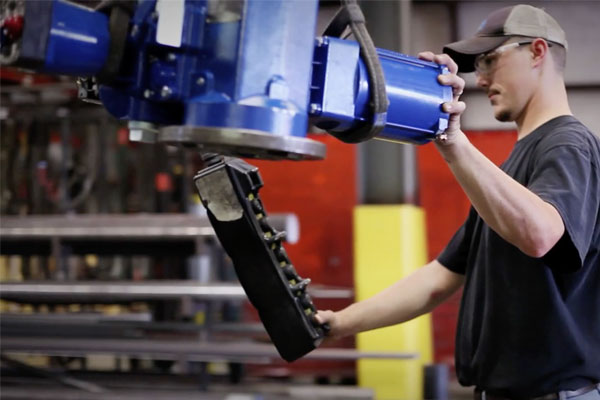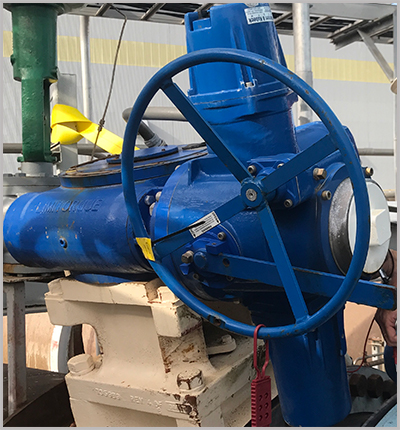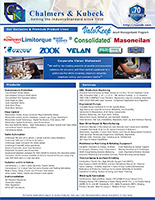BLOG

A day in the life of an MOV
- 13 Jun 2017
An MOV is an automated means to open, close and position a valve. It can be operated using Electricity, Hydraulics or Gas.
It has Limit Switches used to stop the actuator at the open and closed positions. It has Torque sensing switches. It can also have installed a wide variety of user friendly options for control and feedback information. It also has gearing that requires lubrication.
A Day in the Life of an MOV

An MOV, Motor Operated valve, sits dormant in an up and running power generation plant. The Motor Operator is mounted to a 20” rising stem valve in a steam system with 1800 – 2000psi differential pressure. The MOV is at a full open position as requested by the last command signal received. Due to a break in the line and increasing pressures, the steam flow through this valve must be stopped and a close command signal is generated to the MOV. What happens at the MOV? If all is well the MOV closes the valve as required and all downstream are safe.
Very few people understand what just happened
A motor, usually electric and requiring the correct voltage, had to rotate gearing, requiring lubrication of the correct quantity and consistency. This gearing also rotated a stem nut that had to be machined correctly and lubricated in order to push a stem and valve closed. The stem had to be straight and lubricated along with valve guides that were clean and true. A Limit Switch had to recognize the valve position and movement, and along with a Torque Switch controlled the Starter which activated to energize and was de-activated to stop the motor at the end of travel. By the way, the thrust required to close this valve could have exceeded 250,000 lbs. of thrust and 5000 foot pounds of torque. Torque and Thrust values will vary with actuator size, valve size, pressure ranges and other factors.
If the lubrication, clearances or components listed above were less than perfect, from daily operations, the outcome of this situation could have been a great deal different.
Fortunately, the MOV above is set up on a Periodic Maintenance schedule that inspects and repairs problems before unsafe conditions and unscheduled downtimes occur.
We are going to look at the two forces that come into play with a rising stem valve, an MOV or Gearbox, Torque and Thrust.
Torque – The rotational force applied to a pivot point. Turning a doorknob is torque. Tightening a nut on a bolt is torque. Spinning the nut on a threaded stem of a valve requires torque.
Thrust – The linear force required to push or pull an object. Pulling a door open or pushing it closed is thrust. A jet plane forces thrust rearward to propel the plane forward. The area of a valve disc has pressure on one side when closed and no pressure on the other. When the valve is slightly opened, that difference in pressure becomes thrust trying to push the valve disc out of the way. All of that thrust is pushing up the stem to the MOV or Gearbox that operates the valve.
Torque is an important issue to be concerned with when working around or removing an MOV or Gearbox from a valve. If the valve is jammed into the seat or back seat, the Gearbox or MOV may be loaded with a torque force that may surprise you. There are various types of valves, all require Torque to operate. Rising stem valves require Torque to rotate the stem nut then Thrust is needed to pull or push the stem to a valve position. Butterfly or Ball valves require torque only.
Gate, Globe or Weir valves will require Torque and Thrust for operation.
MOV’s and Gearboxes may be installed together on a valve. Smaller MOV’s operating through a Gearbox ratio allows valve operation with a possibly lower cost. In this case the Gearbox is handling the Thrust requirement of the valve and the MOV is supplying the necessary Torque to rotate the Gearbox.
Thrust is where the real danger lies. A 20” rising stem gate valve, if maxed out to its operating parameters could be applying over 250,000 pounds of thrust up the stem to the MOV or Gearbox.
All four jet engines on a 747 aircraft can supply a total of 253,200 pounds of thrust.
Thrust is the ability to accelerate 1 pound @ 32 feet per second. Expressed in “pounds of thrust”, 100 foot pounds of thrust can accelerate I pound @ 3200 feet per second. That’s a one pound bullet at the speed of most high powered hunting rifles.
With these force values in play with each valve movement you can see the importance of Periodic Maintenance
CAUTION – Never attempt the removal of an MOV or Gearbox if that piece of equipment is the one holding the valve in place. Verify that the system is under NO pressure before removing mounting hardware. Periodic Maintenance is not only an unexpected down time saver, it may also be a life saver.

